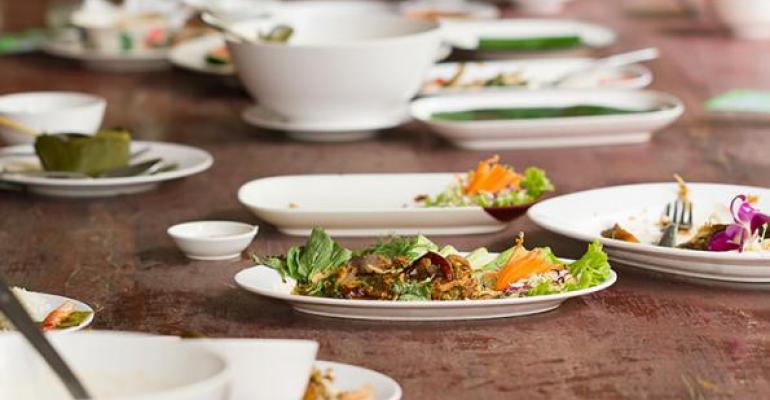No matter how strong your restaurant’s commitment to sustainable operations, dealing with the amount of food it wastes is a challenge. But three emerging approaches could make the job easier. One is a tool that helps operators track and measure the excess product their restaurants create. The second is an app that enables restaurants to sell unused food at a deep discount online, while the third takes food wasted elsewhere and turns it into signature offerings that provide serious sustainability cred.
The tracking tool, a free download, comes from Cornell University. It’s dubbed FRESH: A Food-service Sustainability Rating for Hospitality Sector Events. Creators Sanaa Pirani, Hassan Arafat and Gary Thompson promise it will help restaurant operators evaluate the sustainability of food production for any foodservice establishment for any meal period or event.
“Employee turnover gets all the attention, but food waste is a much larger industry challenge, both in terms of the cost and in terms of the greenhouse gas emission from this waste,” says Thompson. “One statistic we present in the study is that if food waste were a country, it would be third in the list of greenhouse gas producers, after China and the United States.”
FRESH measures sustainability by defining six key metrics and then plugging various combinations of them into 10 simple equations to produce a final score. The results help managers, authorities and even potential guests evaluate the sustainability of food production in any establishment over time. It’s not rocket science as long as you know how to work a basic spreadsheet program.
So where will restaurants find the food waste this tool is designed to discover? It’s all over the place, according to the Grace Communications Foundation.
“Approximately four to ten percent of food purchased by restaurants is wasted before reaching the consumer,” the organization claims. “Drivers of food waste at restaurants include oversized portions, inflexibility of chain store management and extensive menu choices. On average, diners leave 17 percent of their meals uneaten, and 55 percent of edible leftovers are left at the restaurant. This is partly due to the fact that portion sizes have increased significantly over the past 30 years, often being two to eight times larger than USDA or FDA standard servings.
“Kitchen culture and staff behavior such as over-preparation of food, improper ingredient storage and failure to use food scraps and trimmings can also contribute to food loss. All-you-can-eat buffets are particularly wasteful since extra food can’t legally be re-used or donated due to health code restrictions. The common practice of keeping buffets fully stocked during business hours (rather than allowing items to run out near closing) creates even more waste,” the foundation notes.
The new Food For All app takes another tack. Restaurants can make all the food they want near the end of a serving period because the app will help them get rid of unsold items by selling them online at as much as 80 percent off. The pitch to hungry customers: they’re doing the right thing by fighting food waste while also buying restaurant-caliber food at everything-must-go prices.
FFA is in proof-of-concept mode right now, running a 30-restaurant prototype operation in Cambridge, Mass. You can learn more at its Kickstarter funding site. The plan is to roll the FFA app out city-by-city during 2017.
The third approach comes from 412 Food Rescue.
This Pittsburgh-based organization fights food waste in part by taking unused food and turning it into products restaurants and others can buy. It has produced LOAF, a craft brew made from stale bread via the skills of local craft brewer East End Brewing. Its second product is FORAGE, a Pommeau (a liqueur that combines apple brandy and apple cider). Pittsburgh distiller Wigle Whiskey created it using apples foraged from Pittsburgh-area trees by volunteers.
It’s not easy to honor your restaurant’s commitment to the food waste issue while focusing on your primary job of giving customers good food and first-rate hospitality. One or more of these three approaches might enable you to strike that balance.
Contact Bob Krummert at [email protected]





